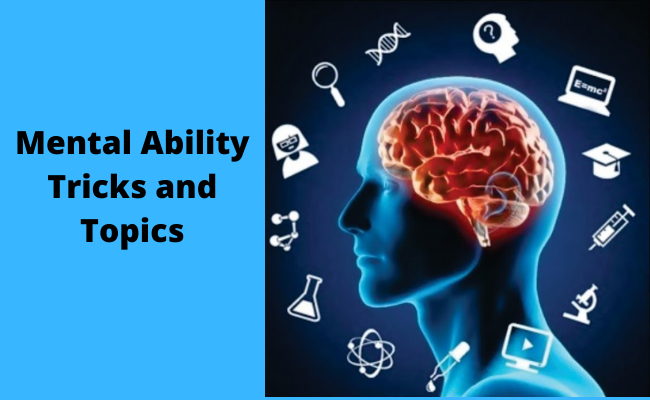Mental ability topics are amongst the most common aptitude skills tested in any competitive exams. From govt exams to MBA entrances, almost all aptitude tests have an entire section dedicated to mental ability skills. But what does the mental ability test evaluate?
The Mental Ability section is not like academic subjects. The questions in the mental ability syllabus for competitive exams require logic and interpretation skills to find the correct answer. This article identifies the mental ability topics list and tricks to solve mental ability questions.
Mental Ability Topics For Competitive Exams
The mental ability topics for competitive exams include both reasoning and interpretation questions. Nonetheless, there is no prescribed mental ability syllabus for competitive exams. Here is the mental ability topics list that most of the competitive exams cover:
- Verbal Reasoning
- Jumbled Paragraphs/Para-jumbles
- Assertion & Reason
- Summary Questions
- Reading Comprehension
- Logical Reasoning
- Data Interpretation (Tables, Charts, Graphs)
- Caselets
- Puzzles
- Analogy
- Blood Relations
- Classification
- Coding and Decoding
- Data Sufficiency
- Direction
- Logical Sequence of Words
- Logical Venn Diagram
- Number Series
- Sequence
- Missing Characters
- Spontaneous Reaction Tests
In order to score well in your exam, you should cover everything mentioned in the mental ability topics list. Now that we have covered the mental ability topics for competitive exams let’s move forward to the tricks to solve the mental ability test faster.
What are the tricks to solve Mental Ability Questions?
No Fixed Theory- Unlike subjects like physics and mathematics, there is no fix theory to solve mental ability questions. Thus, a candidate has to apply various approaches for different types of questions.
Though candidates should learn and revise the mental ability syllabus for competitive exams, they must comprehend the right tricks to excel.
The following are the most common questions concerning this section. Find out the tricks to solve the questions along with some examples.
- To solve any problem in the mental ability test, the candidate needs to read the question carefully. For example, if you are solving a data interpretation question, try to analyze the data very carefully before concluding.
- Blood Relation Tricks– Prepare a tree diagram by assigning symbols to different members of the family. For example, you can allot a circle for mother, a square symbol for father, etc. While reading the questions, draw the symbols of the members mentioned in the problem. This will help you to get accurate answers to blood relation problems.
- Coding-Decoding Tricks: Most of the coding-decoding questions have a particular pattern to figure out the problem. Be it letter codes or substitution questions, the pattern is the key to solve the coding and decoding questions.
- Analogy Tricks– There are various types of verbal analogy questions. The applicants need to find the analogy of one set of words based on the first pair of words. Check the following question for example.
Question
Seismograph : Earthquake :: Taseometer : ?
A) Landslides
B) Strains
C) Resistances
D) Volcanoes
Answer: B
Explanation:
Seismograph measures the intensity of an earthquake.
Similarly, a Taseometer is an instrument to measure physical strains in a structure.
5. Jumbled Paragraph Tricks: Applicants need to identify the opening sentence of the paragraph. The opening of the sentence is important as it gives an introduction to the topic. Similarly, identify the closing sentence. This will help you to find 50% answer to the para jumble question.
6. Assertion And Reason Tricks: The assertion part of the question contains a normal statement. The reason part of the question offers an explanation or statement concerning the assertion. Applicants are given four options to select the right answer. Candidates need to figure out if the assertion and reason statements are true or false and mark the applicable option.
Question
Assertion (A): India’s ‘Republic Day’ falls on 26th January.
Reason (R): Constitution of India, declaring India as a ‘Republic’, came into force on 26th January 1950.
A) if both A and R are true and R is the correct explanation of A
B) if both A and R are true but R is not the correct explanation of A
C) if A is true but R is false
D) if A is false but R is true
Answer: A
7. Direction Sense Tricks: There are four main directions and four cardinal directions. The best way to solve a direction problem is to draw a diagram of the four main directions- North, East, South and West. Keep adding person/directions to the diagram while reading the question.
Example.
One morning after sunrise, Ramesh was standing facing a pole. The shadow of the pole fell exactly to his right. To which direction was he facing?
A) East
B) West
C) South
D) Data is inadequate
Answer: C) South
Explanation:
The sun rises in the east and Ramesh’s shadow falls to his right. Hence, he is facing South.
